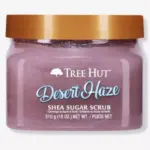I recently read an interesting article about a cancer study that took place in China from 2002 to 2006. The study showed signs that eating cruciferous vegetables had an apparently significant impact on breast cancer survival rates. Interestingly enough, I also recently read an article that was sent to me by a friend, which touted the beneficial effects that these same cruciferous vegetables have on our skin. As both breast cancer and living with healthy skin are things that I think most women have a natural tendency to worry and wonder about, I thought it might be helpful to post a bit that I found interesting in both pieces.
In the first case, the apparent link between breast cancer survivors staying healthy and eating cruciferous vegetables lies in the phytochemicals within these vegetables, called indoles and isothiocyanates. Both of these elements, which are specific to these vegetables, have been widely researched and are generally thought to protect against some types of cancers. The study showed that compared to those women who ate the lowest doses of cruciferous vegetables, those who ate the highest doses had a sixty-two percent reduced chance of both general mortality, and breast cancer induced mortality. It also showed that these women had a thirty-five percent reduced chance of reoccurrence of breast cancer when compared against the same group. With figures like these, it’s hard to ignore the beneficial punch that these vegetables can seemingly pack. But they don’t stop there.
In the case of healthy skin, cruciferous vegetables often contain beneficial antioxidants including vitamins E and C, especially in broccoli and Brussels sprouts in particular. These vitamins contribute not only to healthy skin but also to healthy hair and eyes as well. In addition, cabbage contains beta-carotene, which aids in body tissue regrowth and has been shown to protect skin from sun damage. Beta-carotene is also converted into vitamin A once inside our bodies, and is the most effective and safe way to get your necessary dose of this important vitamin.
If you’re anything like me, it’ll be hard not to think twice the next time you find yourself in the grocery store wondering what to pickup for dinner. A wise action hero once said, “knowing is half the battle.” In this case, with our lives and personal health at hand, it seems like a bit more than half. I’m just glad I had the good fortune of finding this helpful information and could share it with you all here.













Recent Comments